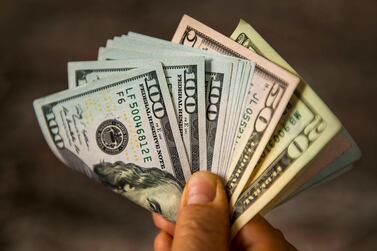When the gold price hit a record high of $1,918 on August 23, the question was whether the markets were experiencing a bubble or a genuine reflection of the precious metal’s value to investors.
In the 1970s, there was a famous gold bubble. Gold rose from $35 at the beginning of the decade to $850 by its end. A combination of US elections, weak macroeconomic performance and the oil crisis pushed the gold price upwards and gave birth to the trends of safe-haven buying, hedging risk with gold and the inverse relationship between the USD and the yellow metal.
Fast forward to 2020, and while the macroeconomic scenario is weak and oil prices went through a shock, when we factor in the coronavirus pandemic, it is a unique situation compared to the 1970s.
The pandemic prompted safe-haven buying to an extreme level as other assets such as oil went through a price crisis and demand crumbled. Massive injections of central bank money into the global economy combined with lockdowns, high unemployment, cautious investor sentiment and consumer spending added up to anaemic price inflation and, paradoxically, roaring stock market prices. Demand for certain consumer goods and stocks are relatively high compared to others, meaning distortions in the economic system.
With this complex and extraordinary situation in mind, we must see the gold price drivers in the fourth quarter from a new perspective.
Gold ETFs
The first major difference to the 1970s is the introduction of gold exchange-traded funds as a tradeable security. Gold ETFs entered the markets in the 21st century. Australia was the first country to launch a gold-backed ETF in 2003. These derivative products give investors the chance to make a return on the traditional non-yielding metal, extending the range of investments and possibly supporting the metal’s value.
Is there a bubble in the gold price? We could argue that gold-backed ETFs are a stabilising factor in the case of a puncture. This argument is particularly powerful if we consider the fact that these types of ETFs hold enough gold to rival central bank reserves.
Weak USD
The circumstances around the current dollar weakness are different from the 1970s. Back then, the oil crisis drove commodity prices up and the greenback down as the economy crashed into a wall of negative sentiment.
These days, the dollar is retreating because of a dovish Federal Reserve following a course of quantitative easing and low interest rates, meaning less investor interest in dollar-denominated bonds. The coronavirus pandemic lockdowns combined with the US-China trade tensions since 2016 caused unprecedented economic losses.
Gold is priced in US dollars, so a weaker dollar means that the precious metal is more affordable. Record low interest rates make borrowing and investment easier in ETFs or physical gold. If there is a bubble around the gold price, the vulnerability could stem from buying it with borrowed money. There could be a rise in interest rates followed by a drop in the gold price, meaning debt repayment with a less valuable asset.
Another vulnerability could be riskier price sensitivities, such as inflation in gold markets. If the dollar’s value weakens further, this factor could become a serious issue, much like the loaf of bread that cost $1,000 (Dh3,672) during the Great Depression. In this context, would an ounce of gold that costs $3,000 be much different?
US elections
Traditionally, election periods are positive for gold prices because investors fear the uncertainty in a political changeover. With that in mind, gold prices may see continued support until the US elections are over in November.
China recovery
The economic turbulence during the pandemic sustained gold prices and safe-haven buying. The flip side of the coin is an economic recovery such as the one in China. In August, retail sales bounced back and industrial production rose 5.6 per cent. A continued recovery in the world’s second-largest economy may dampen gold’s spirits.
Vaccine
If an effective Covid-19 vaccine is found, it would likely impact gold prices negatively because investor sentiment would likely improve. However, the chances of this happening in the fourth quarter are increasingly unlikely, according to recent reports. Still, positive developments around the vaccine tests may trigger short-term losses for gold bulls.
Hussein Sayed is the chief market strategist at FXTM.







